7-Day Healthy Meal Plan for Effective Weight Loss: Your Complete Guide
With so many diets and nutritional recommendations, knowing exactly what to put on your plate at each meal can be a huge challenge. Even though I haven’t had the experience of having to follow a restrictive eating plan, I can relate to the frustration of those who try to put together healthy meals without having clear direction. It was with this difficulty in mind and in the search for clarity that I decided to explore in depth the creation of a 7-day eating plan. I believe that having a complete guide, with balanced options for each day, can simplify the weight loss journey and make it more accessible and effective for everyone.
Hey, tired of fad diets that leave you hungry and frustrated? Want a sustainable way to lose weight without feeling restricted? You’re in the right place.
This 7-day Healthy Meal Plan is designed to keep you full, energized, and on track. It’s packed with delicious meals and built on science-backed strategies to support real, lasting weight loss.
Why do most diet plans fail? (And how this Healthy Meal Plan is different).
Before diving into our meal plan itself, it’s important to understand what makes a nutritional strategy truly effective for weight loss?
According to Dr. Rebecca Martinez, director of nutrition at the Center for Sustainable Weight Management:
“The most successful eating plans focus on nutrient density, portion control, and psychological satisfaction, rather than severe restriction.”
This balanced 7-day eating regimen incorporates these principles by:
-Prioritizing whole, unprocessed foods.
-Including adequate protein at every meal.
-Incorporate plenty of fiber through vegetables, fruits, and whole grains.
-Maintain appropriate portion sizes without counting calories.
-Build in strategic flexibility to avoid feelings of deprivation.
The Science Behind It
Research published in the International Journal of Behavioral Nutrition and Physical Activity shows that meal plans that balance macronutrients (protein, carbohydrates, and fats) while focusing on whole foods lead to better adherence and more sustainable results compared to very low-calorie or single-macronutrient approaches.
Another example is Professor James Wilson, Ph.D. in Nutritional Sciences, who explains:
“When we create nutrition plans that meet both physiological and psychological needs, we see dramatically higher success rates. That means including enough protein for muscle preservation, fiber for satiety, and even planned moments of indulgence to maintain psychological well-being.”
How You’ll Use This 7-Day Meal Plan:
This weekly menu is designed to provide approximately 1,500-1,700 calories per day — appropriate for gradual, sustainable weight loss for most adults. However, individual needs will vary based on factors such as:
-Current weight and height.
-Activity level.
-Age and gender.
-Medical conditions.
Consider consulting with a healthcare professional or registered dietitian before beginning any new eating regimen, especially if you have underlying health conditions.
Customization Guidelines
To adjust this plan to your specific needs:
-Add an additional snack or increase portion sizes if you are very active or have higher calorie needs.
-Reduce portions slightly (never skip meals) if you have lower calorie needs.
-Substitute ingredients based on food preferences or allergies, while maintaining similar macronutrient profiles.
Your Complete 7-Day Weight Loss Meal Plan:

Day 1: Metabolism Kickstart
🥞Breakfast:
- Veggie omelet (2 eggs + 1 cup mixed greens sautéed in 1 tsp olive oil)
- 1 slice whole grain toast
- 1/2 avocado
🥗Lunch:
- Grilled chicken salad with 4 oz chicken breast, 2 cups mixed greens, 1/4 cup cherry tomatoes, 1/4 cup cucumber, 2 tbsp balsamic vinaigrette
🥪Snack:
- 1 apple with 1 tbsp almond butter
🥘Dinner:
- 4 oz baked salmon with lemon and herbs
- 1 cup roasted Brussels sprouts
- 1/2 cup quinoa
Nutritional Profile: Approximately 1,550 calories, 100g protein, 130g carbs, 65g fat
Day 2: Anti-inflammatory Focus
🥞Breakfast:
- Green smoothie (1 cup spinach, 1/2 banana, 1/2 cup berries, 1 tbsp chia seeds, 1 scoop plant-based protein, 1 cup unsweetened almond milk)
🥗Lunch:
- Mediterranean bowl with 1/2 cup chickpeas, 1/2 cup brown rice, 1 cup roasted vegetables, 2 tbsp hummus, 1 tbsp tahini dressing
🥪Snack:
- 1/4 cup mixed nuts
🥘Dinner:
- Turkey taco lettuce wraps (4 oz lean ground turkey, taco seasoning, lettuce leaves, 1/4 cup diced tomatoes, 2 tbsp Greek yogurt, 1/4 avocado)
Nutritional profile: Approximately 1,600 calories, 95g protein, 145g carbs, 70g fat
Day 3: Optimizing Gut Health
🥞Breakfast:
- Probiotic parfait (3/4 cup Greek yogurt, 1/2 cup berries, 1 tbsp ground flaxseed, 2 tbsp low-sugar granola)
🥗Lunch:
- 4 oz grilled chicken with 1 cup roasted sweet potato and 1 cup steamed broccoli
🥪Snack:
- 1 medium pear with 1 cheese shred
🥘Dinner:
- 4 oz tofu stir-fry, 2 cups mixed vegetables, 1 tbsp low-sodium soy sauce, 1/2 cup brown rice
Nutritional Profile: Approximately 1,520 calories, 105g protein, 160g carbs, 50g fat
Day 4: Steady Energy Day
🥞Breakfast:
- Overnight oats (1/2 cup rolled oats soaked in 3/4 cup unsweetened almond milk, 1 tbsp chia seeds, 1/2 scoop protein powder, cinnamon, 1/4 cup berries)
🥗Lunch:
Power bowl with 4 oz grilled shrimp, 1/2 cup quinoa, 2 cups mixed greens, 1/4 cup black beans, 1/4 avocado, 2 tbsp cilantro lime dressing
🥪Snack:
1 small apple with 2 tbsp peanut butter
🥘Dinner:
4 oz lean beef stir fry with 2 cups mixed vegetables, 1 tsp sesame oil, and 1/2 cup brown rice
Nutritional Profile: Approximately 1,600 calories, 110g protein, 150g carbs, 60g fat
Day 5: Support for detox
🥞Breakfast:
Detox smoothie (1/2 cup pineapple, 1/2 cucumber, 1 cup spinach, 1 tbsp lemon juice, 1 tbsp ginger, 1 scoop protein powder, water, and ice)
🥗Lunch:
Large salad with 2 cups mixed greens, 4 oz canned wild salmon, 1/4 cup shredded carrots, 1/4 cup cherry tomatoes, 1/4 avocado, 2 tbsp olive oil, and lemon dressing
🥪Snack:
1/4 cup hummus with 1 cup sliced vegetables (peppers, cucumbers, celery)
🥘Dinner:
Herb-roasted chicken breast (4 oz) with 1 cup roasted root vegetables and 2 cups sautéed kale
Nutritional profile: Approximately 1,500 calories, 105g protein, 120g carbs, 65g fat
Day 6: Flexibility Day
🥞Breakfast:
Protein pancakes (1 scoop protein powder, 1 small banana, 1 egg, 1/4 cup oatmeal) topped with 1/4 cup berries
🥗Lunch:
Lentil soup (1 cup) with salad (2 cups greens, 1/4 cup cherry tomatoes, 2 tbsp vinaigrette)
🥪Snack:
Greek yogurt parfait (3/4 cup yogurt, 1 tbsp honey, 2 tbsp low-sugar granola)
Planned “fun meal” – reasonable portion of a favorite food + side of vegetables
Note: The “fun meal” is strategically included to avoid feelings of deprivation and improve long-term adherence. It is not a “cheat meal,” but rather an intentional part of the plan.
Nutritional Profile: Varies based on meal choice, target range 1,600-1,800 calories.
Day 7: Recovery and Reset
🥞Breakfast:
Veggie Frittata (2 eggs, 1 cup mixed greens, 1 oz feta cheese) with 1 slice whole grain toast
🥗Lunch:
Tuna and avocado salad (4 oz tuna mixed with 1/4 avocado, chopped celery, lemon juice) on 1/2 whole wheat pita bread with 2 cups leafy greens
🥪Snack:
1 small banana with 1 tbsp peanut butter
🥘Dinner:
4 oz grilled chicken breast with 1 cup ratatouille and 1/2 cup quinoa
Nutritional Profile: Approximately 1,550 calories, 110g protein, 130g carbs, 60g fat.
Here’s a grocery shopping list tip for your success

To prepare for this nutrition plan, you’ll need the following items:
Protein:
- Eggs
- Chicken breast
- Salmon and white fish
- Lean ground turkey
- Extra firm tofu
- Canned tuna and salmon
- Greek yogurt
- Lean beef
Vegetables:
- Mixed salad greens
- Spinach
- Pears
- Peppers
- Cucumber
- Cherry tomatoes
- Brussels sprouts
- Broccoli
- Cauliflower
- Carrots
- Sweet potatoes
- Kale
- Zucchini
- Mixed stir-fry greens
Fruits:
- Berries (strawberries, blueberries, raspberries)
- Apples
- Bananas
- Lemons
- Limes
- Pineapple
- Pears
Whole grains and legumes:
- Brown rice
- Quinoa
- Rolled oats
- Bread Whole grains
- Chickpeas
- Black beans
- Lentils
Healthy Fats:
- Avocados
- Olive oil
- Almonds and mixed nuts
- Chia seeds
- Flax seeds
- Nut butters
Condiments and extras:
- Balsamic vinegar
- Low-sodium soy sauce
- Herbs and spices
- Hummus
- Tahini
- Low-sugar granola
- Protein powder
Meal Prep Tips for Busy Schedules
Successfully implementing any nutrition plan requires some preparation. Dr. Laura Chen, a behavioral nutrition expert, notes:
“The most common reason people abandon healthy eating plans is lack of preparation. When healthy options aren’t readily available, we turn to convenience foods.”
Try these efficient meal prep strategies:
Weekend prep (1-2 hours)
- Wash and chop vegetables for the week.
- Cook a batch of whole grains.
- Prepare protein sources (grill chicken, bake salmon).
- Make a soup or stew for lunches.
Batch cooking staples
- Overnight oats (prepare 3-4 days at a time).
- Roast vegetables on a sheet pan.
- Salads in mason jars (layer dressing on the bottom, greens on top).
- Protein energy balls for snacks.
Smart storage
- Invest in quality glass containers.
- Freeze individual portions of prepped proteins.
- Store chopped vegetables with damp paper towels to maintain freshness.
Beyond the Meal Plan: Lifestyle Factors for Improved Results

While following this balanced eating plan is powerful, combining it with certain lifestyle practices can further enhance your results, leading to long-term health.
Hydration Strategy
Professor Michael Torres, hydration expert at the Institute for Nutritional Health, recommends:
“For optimal metabolism and appetite regulation, drink 2 to 3 liters of water daily, with 16 ounces immediately upon waking and 16 ounces before each meal.”
Movement Strategy
This nutrition plan works best when combined with regular physical activity:
- 150 minutes of moderate-intensity exercise weekly.
- 2 to 3 strength-training sessions weekly.
- Walking 7,000 to 10,000 steps daily.
Mindful Eating Practices
Registered dietitian Sarah Johnson advises:
“How we eat matters as much as what we eat. Practicing mindful eating—focusing fully on food without distractions—naturally improves portion control and satisfaction.”
Try:
- Eating without electronic devices.
- Chewing thoroughly.
- Pausing mid-meal to assess hunger.
- Using smaller plates.
Common Questions About This Meal Plan
“Can I substitute ingredients I don’t like?”
Of course! The key is to stick to the general structure—a source of protein, high-fiber carbs, and healthy fats at each meal. Feel free to substitute foods from the same category (e.g., salmon for chicken, quinoa for brown rice).
“What if I’m still hungry?”
Add non-starchy vegetables (like cucumber, celery, bell peppers, or leafy greens) to any meal — they’re filling and low in calories. If hunger still lingers, it might be time to adjust your portions to better fit your needs.
Need more strategies? Check out our science-backed tips for managing hunger and appetite to help you stay full and in control throughout the day.
“How much weight can I expect to lose?”
Healthy, sustainable weight loss typically ranges from 0.5 to 2 pounds per week. Keep in mind that factors such as starting weight, hormones, sleep quality, and stress levels will influence results.
“Can I follow this plan if I have dietary restrictions?”
This plan can be adapted to suit most dietary needs:
Vegetarian: Substitute plant-based proteins such as legumes, tofu, tempeh.
Gluten-free: Replace grains that contain wheat with rice, quinoa, certified gluten-free oats.
Dairy-free: Use yogurts and plant-based milks.
Comment below with your question.
Article Summary: 7-Day Meal Plan for Healthy Weight Loss
This article presents a 7-day meal plan that focuses on whole foods, macronutrient balance, and flexibility to promote effective and sustainable weight loss without severe restrictions. It explains the principles behind the plan, its scientific basis, and provides a complete menu for each day, along with customization tips, a shopping list, and meal prep strategies. The article also highlights the importance of lifestyle factors such as hydration, exercise, and mindful eating to optimize results. In short, it provides a practical and comprehensive guide for those looking to lose weight healthily and build lasting eating habits.
Conclusion: Your path to healthy, effective weight loss.
This 7-day healthy meal plan provides a foundation for effective, sustainable weight loss by focusing on nutrient-dense whole foods, balanced macronutrients, and strategic flexibility. Remember, the most successful way to eat is the one you can stick to consistently over time.
Start with this structured plan, then gradually adapt it to your personal preferences and lifestyle for long-term success. The goal is not perfection, but consistency—making healthy choices most of the time while allowing for reasonable flexibility.
By combining this carefully designed nutritional strategy with regular physical activity and mindful eating practices, you’re setting yourself up for not just temporary weight loss, but lasting weight management and better overall health.
This article has been reviewed by our team of registered dietitians and nutrition scientists to ensure accuracy and alignment with current evidence-based nutritional guidelines.

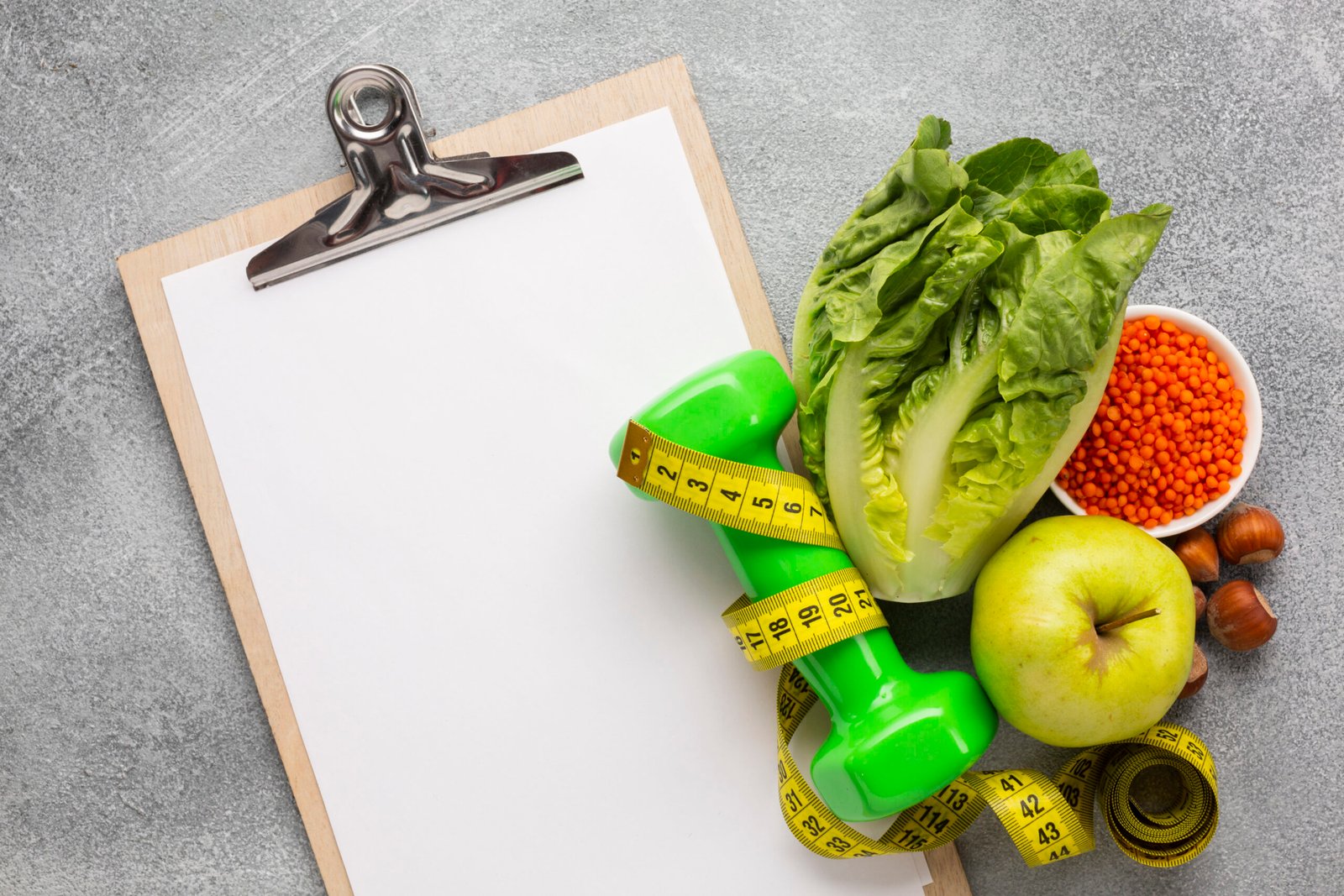


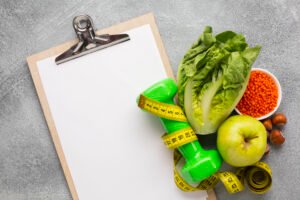


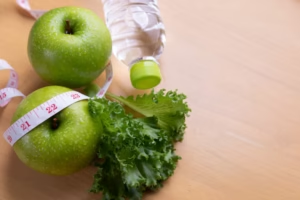
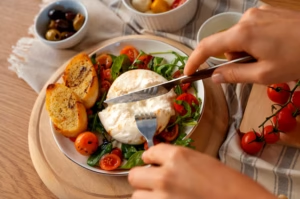




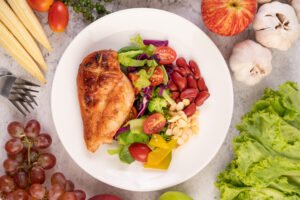
5 comments